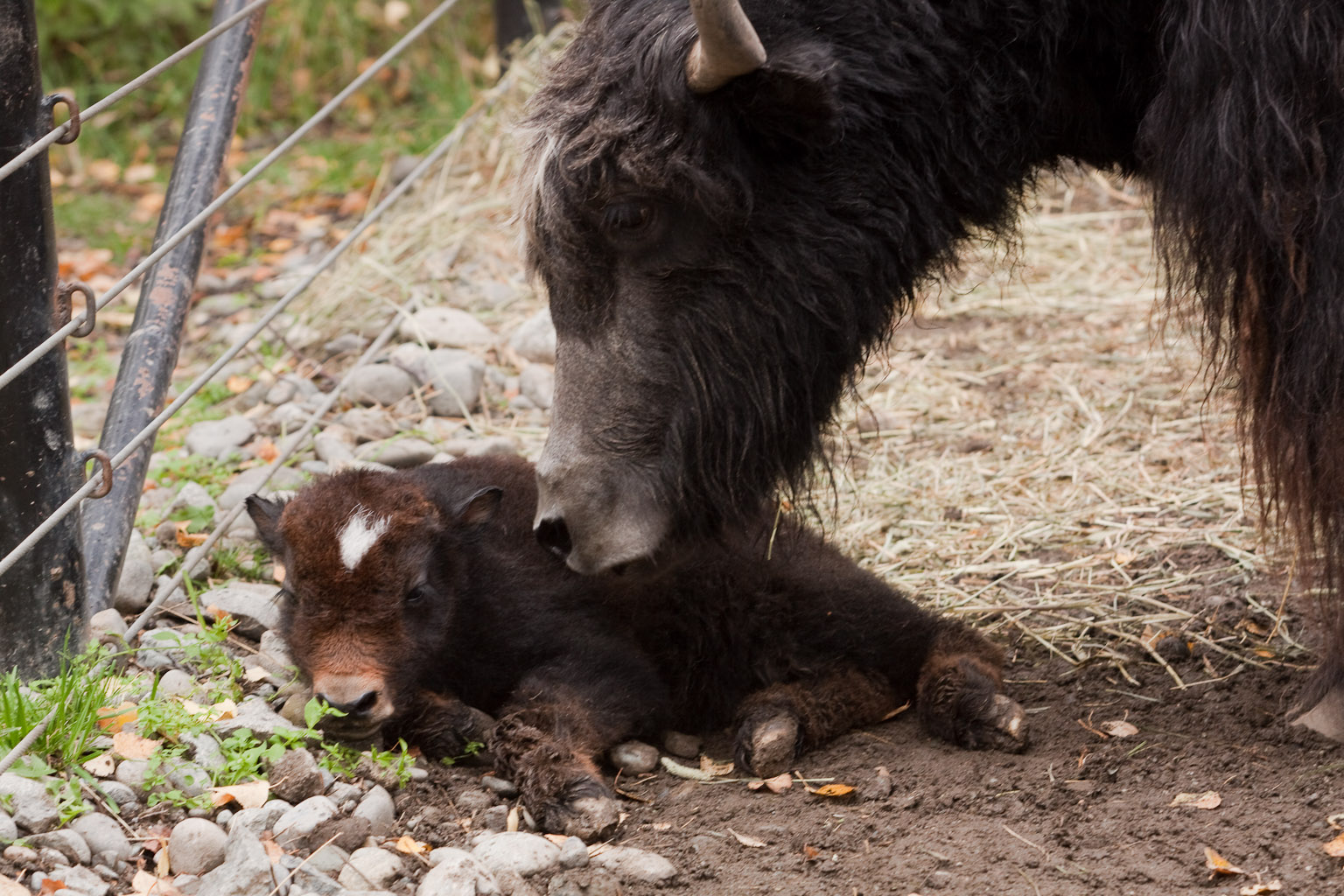Tibetan Yak
Meet this sub-Arctic species adapted to life in low-oxygen, high-elevation environment. Back to animal directory.
Video (left) may be found on the credited author's page here.
Bos grunniens
LIFE SPAN: 25 years under human managed care.
RANGE: Tibetan yaks are a species bred and raised in managed herds for meat. Our zoo yaks originated from local yak herds in Alaska. Wild Tibetan yaks are native to the Himalayan Mountains of Nepal and Tibet.
SIZE: Domestic bulls weigh from 900 to 1,200 pounds. Wild yaks are much larger, sometimes weighing up to 2,200 pounds. Males are larger than females, with more massive horns. Wild yak bulls may stand over 6 feet tall at the shoulder.
PHYSICAL FEATURES: Tibetan yaks are bovids, however their horse-like tails and long hair set them apart from other members of the family Bovidae. Both sexes have curved horns, with males having more massive horns than females. Tibetan yaks have relatively few sweat glands, allowing them to conserve heat while braving extreme cold and wind conditions. Their larger heart and lungs allow them to pump more blood and take in more air. This higher level of oxygen intake is coupled with their specialized hemoglobin which allows higher oxygen binding and distribution through the blood to all of the tissues. They are able to take in more oxygen and their blood is able to capture is and utilize it in their extreme, high-altitude environment which is lacking oxygen in the air.
FOOD: Yaks are easy to care for because they are efficient food-converters. Under human managed care, they eat the same food as regular cattle however they need half the amount to thrive. Adult yaks can do well on grass hay and a mineral block with no supplemental feed. Yaks have a rough tongue to aid in licking lichens off of rocks. In the wild, they eat grass and do very well in a variety of pasture types.
BEHAVIOR: Tibetan yaks were domesticated in Tibet nearly 5,000 years ago. Primary uses include meat, milk, fiber, hide, butter, transportation and dung for fuel. Yaks are amazing pack animals, beasts-of-burden to carry heavy loads up steep mountainsides with loose rocks. They are extremely agile and sure-footed on slippery and steep terrain. They can climb up to 20,000 feet in altitude.
CONSERVATION: There are fewer than 400 wild yaks in Tibet and Nepal. The Wild Yak is listed as an endangered species. Threats include hybridization and competition with domestic stock, poaching and habitat disturbance. Tibetan yaks managed by people are of the common, domesticated variety.

